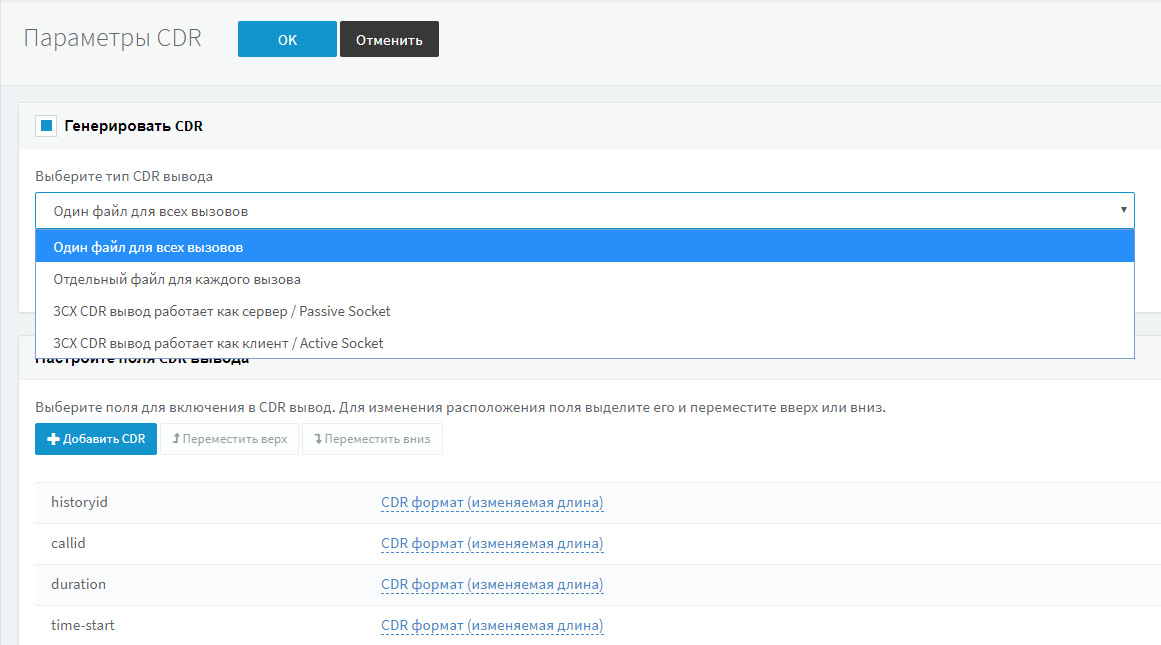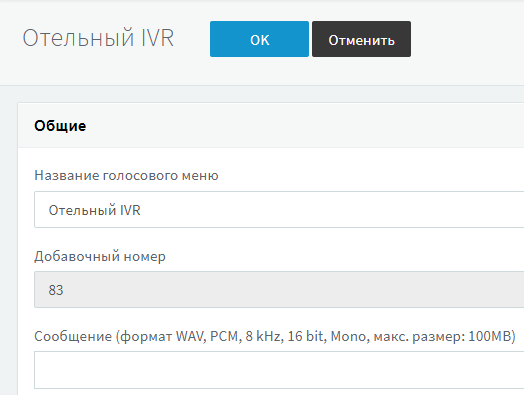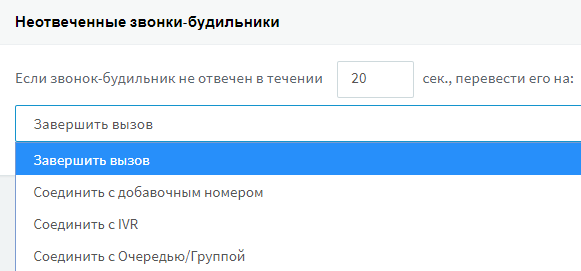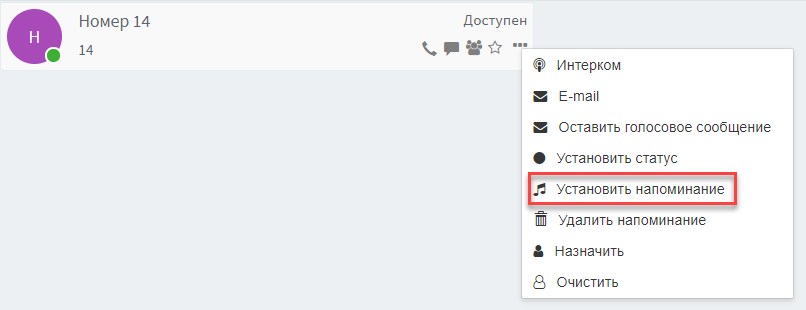Telephony for hotels: billing and wake-up calls in 3CX
In the last article, we looked at the capabilities of the IP-PBX 3CX hotel module, and in this article we will dwell on two important functions of this module: billing (tariffing guest calls) and setting alarm calls to the internal guest number.
3CX generates billing data, based on which you can bill for guests of the hotel. It makes sense to configure billing parameters only if integration with the PMS system using the Mitel protocol is used (for example, Innquest Roommaster and Brilliant / HotelConcepts systems). When using the Fidelio (FIAS) protocol (Micros-Fidelio and Protel systems), billing data is not transferred to the PMS system. The cost of the call is calculated and transmitted to the CDR (Call Data Record) output as a text file or a socket record (IP address and TCP port of the PMS server).
3CX calculates the cost of the call based on the dialed prefix and the duration of the call. To do this, in the 3CX management interface, you need to specify the cost of international calls for the prefix of each country), calls within the country and calls to mobile networks. By default, the tariff for any direction is set to 1.0 (conditional unit) for 60 seconds. talk.
')
To change tariffs in the 3CX interface, go to Reports> Call Costs and set your tariffs.

If the prefix of the dialed number is present in the tariffs, the cost of the call is calculated as the talk time * specified rate (per minute).
CDR output can be generated in four ways:
To enable CDR output in the 3CX interface, go to Settings> CDR, enable the Generate CDR option and select the desired type of CDR output. When using a server (active) socket / client (passive) socket, specify the IP address and port of the PMS system.
If you need to change the format of the data placed in the CDR output, go to Settings> CDR output> Customize CDR output fields. Here you can select the fields to be placed in the CDR records, as well as change the order and length of the fields (dynamic or fixed). Learn more about modifying CDR output .

CDR files are located in the following folders:
An important function of any hotel PBX is the ability to install alarm calls on the telephone in the room. To do this, a special IVR-service is created in the system (this IVR-service is also responsible for working with dial codes of the status of housekeeping).

To configure the IVR service in the 3CX interface, go to the Voice menu> Add and specify the name of the voice menu, for example, Hotel IVR. Record a voice message with something like this: “Dear guest! Good morning! Your wake-up call. ”

Then scroll down the interface and in the Options section enable the Service IVR alarm-wake-up option.

There can be only one IVR alarm call service in the system. In the system, it can be distinguished by the label [IVR alarms] near the name.
The wake-up call can be set by the guest on their own without the participation of the receptionist. For example, the alarm clock has the number 83. The guest dials this number and hears the system voice menu, with which it sets the date and time of the alarm.

If the guest in the room for some reason did not respond to the alarm, you can set the call forwarding to the hotel administrator. To do this, go to Settings> Hotel module, scroll down to the Unanswered call alarm section and specify where to transfer the call if the guest picked up the phone.
An alarm call can be scheduled by the administrator for any PBX extension (that is, a hotel room). The 3CX user who sets the alarm should have the right to perform secretary operations in the group of extensions that are set for the hotel guests.

To set an alarm for the guest, click on the ellipsis next to the extension, select Set reminder, and set the date and time of the alarm.
The administrator can see all alarms set by him in the web client interface in the Operator Panel> Call Reminders section. Here, the alarm clock can be changed or deleted.

For one number you can set only one alarm. Therefore, if a new alarm clock is set for the number, the time of the existing one will simply be updated.
The alarm clock IVR service uses a set of voice messages in English supplied in the 3CX distribution. It is advisable to localize it in the language that guests use. To do this, write the appropriate messages and replace them with existing English. Messages for the IVR service of alarms are located in the following folders:
Recommendations for recording messages:
Tariffication of calls in the hotel module 3CX
3CX generates billing data, based on which you can bill for guests of the hotel. It makes sense to configure billing parameters only if integration with the PMS system using the Mitel protocol is used (for example, Innquest Roommaster and Brilliant / HotelConcepts systems). When using the Fidelio (FIAS) protocol (Micros-Fidelio and Protel systems), billing data is not transferred to the PMS system. The cost of the call is calculated and transmitted to the CDR (Call Data Record) output as a text file or a socket record (IP address and TCP port of the PMS server).
3CX calculates the cost of the call based on the dialed prefix and the duration of the call. To do this, in the 3CX management interface, you need to specify the cost of international calls for the prefix of each country), calls within the country and calls to mobile networks. By default, the tariff for any direction is set to 1.0 (conditional unit) for 60 seconds. talk.
')
To change tariffs in the 3CX interface, go to Reports> Call Costs and set your tariffs.

If the prefix of the dialed number is present in the tariffs, the cost of the call is calculated as the talk time * specified rate (per minute).
CDR output
CDR output can be generated in four ways:
- One cdr file for all calls
- One cdr file for each call
- Output to active socket (connection initiation)
- Output to passive socket (waiting for connection)
To enable CDR output in the 3CX interface, go to Settings> CDR, enable the Generate CDR option and select the desired type of CDR output. When using a server (active) socket / client (passive) socket, specify the IP address and port of the PMS system.
If you need to change the format of the data placed in the CDR output, go to Settings> CDR output> Customize CDR output fields. Here you can select the fields to be placed in the CDR records, as well as change the order and length of the fields (dynamic or fixed). Learn more about modifying CDR output .

CDR files are located in the following folders:
- 3CX for Windows% allusersprofile% \ 3CX \ Instance1 \ Data \ Logs \ CDRLogs
- 3CX for Linux var / lib / 3cxpbx / Instance1 / Data / Logs / CDRLogs
Calls - Alarms / Reminders
An important function of any hotel PBX is the ability to install alarm calls on the telephone in the room. To do this, a special IVR-service is created in the system (this IVR-service is also responsible for working with dial codes of the status of housekeeping).

To configure the IVR service in the 3CX interface, go to the Voice menu> Add and specify the name of the voice menu, for example, Hotel IVR. Record a voice message with something like this: “Dear guest! Good morning! Your wake-up call. ”

Then scroll down the interface and in the Options section enable the Service IVR alarm-wake-up option.

There can be only one IVR alarm call service in the system. In the system, it can be distinguished by the label [IVR alarms] near the name.
Setting an alarm clock guest from an IP phone
The wake-up call can be set by the guest on their own without the participation of the receptionist. For example, the alarm clock has the number 83. The guest dials this number and hears the system voice menu, with which it sets the date and time of the alarm.

If the guest in the room for some reason did not respond to the alarm, you can set the call forwarding to the hotel administrator. To do this, go to Settings> Hotel module, scroll down to the Unanswered call alarm section and specify where to transfer the call if the guest picked up the phone.
Setting an alarm by an administrator from the 3CX web client
An alarm call can be scheduled by the administrator for any PBX extension (that is, a hotel room). The 3CX user who sets the alarm should have the right to perform secretary operations in the group of extensions that are set for the hotel guests.

To set an alarm for the guest, click on the ellipsis next to the extension, select Set reminder, and set the date and time of the alarm.
Alarm call management
The administrator can see all alarms set by him in the web client interface in the Operator Panel> Call Reminders section. Here, the alarm clock can be changed or deleted.

For one number you can set only one alarm. Therefore, if a new alarm clock is set for the number, the time of the existing one will simply be updated.
Voice messages for alarms
The alarm clock IVR service uses a set of voice messages in English supplied in the 3CX distribution. It is advisable to localize it in the language that guests use. To do this, write the appropriate messages and replace them with existing English. Messages for the IVR service of alarms are located in the following folders:
- 3CX for Windows:% programdata% \ 3CX \ Instance1 \ Data \ Ivr \ Prompts \ Hotel
- 3CX for Linux: / var / lib / 3cxpbx / Instance1 / Data / Ivr / Prompts / Hotel
Recommendations for recording messages:
- Supported audio format: WAV, PCM, 8 KHz, 16 bit.
- Try to create .wav files as small as possible.
- If possible, remove patches of silence for more than 10–20 ms at the beginning and end of the file.
- Avoid sharp clipping of the sound at the end of the file to avoid playback artifacts (clicks) at the end of the message.
- Create message files with the same audio characteristics: volume, tone and voice timbre so that the voice menu sounds natural and uniform.
- Make sure that the names of your sound files match exactly the originals that you replace.
Source: https://habr.com/ru/post/350950/
All Articles